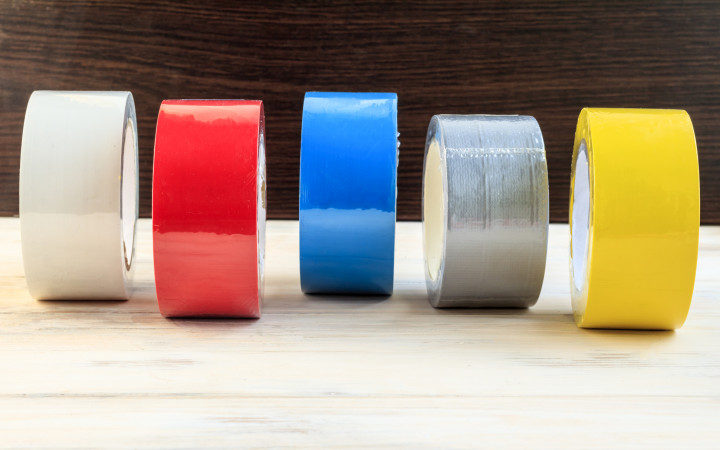Today’s Wonder of the Day was inspired by Emma. Emma Wonders, “What makes tape so sticky?” Thanks for WONDERing with us, Emma!
What can you use for household chores, clothing repair, and gift wrapping? Here’s a hint: You can also use it to hang holiday decorations, make wallets, and dress up for the big dance. If you’re thinking of tape, you’ve guessed right!
Tape has many uses because it comes in many types. There’s a tape for just about anything. Most people have probably used Scotch tape—that’s the clear tape you might use to seal envelopes or wrap gifts. You may have also used masking tape or electrical tape before. They‘re both pretty common for jobs around the home. You may also be familiar with duct tape. It’s used for everything from household repairs to fashion accessories.
However, there are many types of tape you may never have heard of. There’s elastic therapeutic tape, also known as “k-tape.” K-tape helps reduce pain. People use k-tape after pulling a muscle or taking part in extreme exercise. It’s stretchy and latex-free, so k-tape can safely be used directly on the skin.
There’s also grip tape. It’s applied to items to help people grip them. It’s very strong and comes in bright colors. Grip tape is often used in sports. People put grip tape on skateboards, hockey sticks, and tennis rackets.
Unless you work on race cars or airplanes, you may not have used speed tape. Made of aluminum, speed tape is used for small repairs to cars and planes. Would you be nervous about flying in a plane held together by tape? Try not to worry! Speed tape is only used for small, temporary repairs.
Have you ever WONDERed what makes tape stick? Tape contains adhesives, which are materials that stick to other objects. These adhesives are usually made of silicones, acrylics, and rubbers. Tape also contains resin which increases its stickiness.
Tape adhesives have low surface energy, which means their molecules move around a lot. They have looser bonds. Because of this, the adhesive is able to act like a liquid, even though it’s a solid. It flows into the pores of the material we stick it to. Then, its elastic nature causes it to resist separation. That’s how tape sticks!
It’s also important to remember that tape is pressure-sensitive. That’s why it sticks best if you press it down. It also needs to be able to interact with molecules of a surface to stick well. That’s why tape sticks well to objects with high surface energy, meaning the surface molecules are less active. This includes surfaces like metal, glass, and plastic.
People certainly use tape for a variety of tasks! We use tape for medical purposes, package sealing, and even space travel. We use so much duct tape each year that, if we lined it all up, it would wrap around the Earth’s equator twelve times! What kind of tape do you use at school? How about at home? What’s the coolest thing you’ve ever done with tape?
Standards: NGSS.PS1.A, CCRA.L.3, CCRA.L.6, CCRA.R.1, CCRA.R.2, CCRA.R.10, CCRA.W.2, CCRA.W.4, CCRA.W.9, CCRA.L.1, CCRA.L.2, CCRA.SL.1, CCRA.SL.2,




